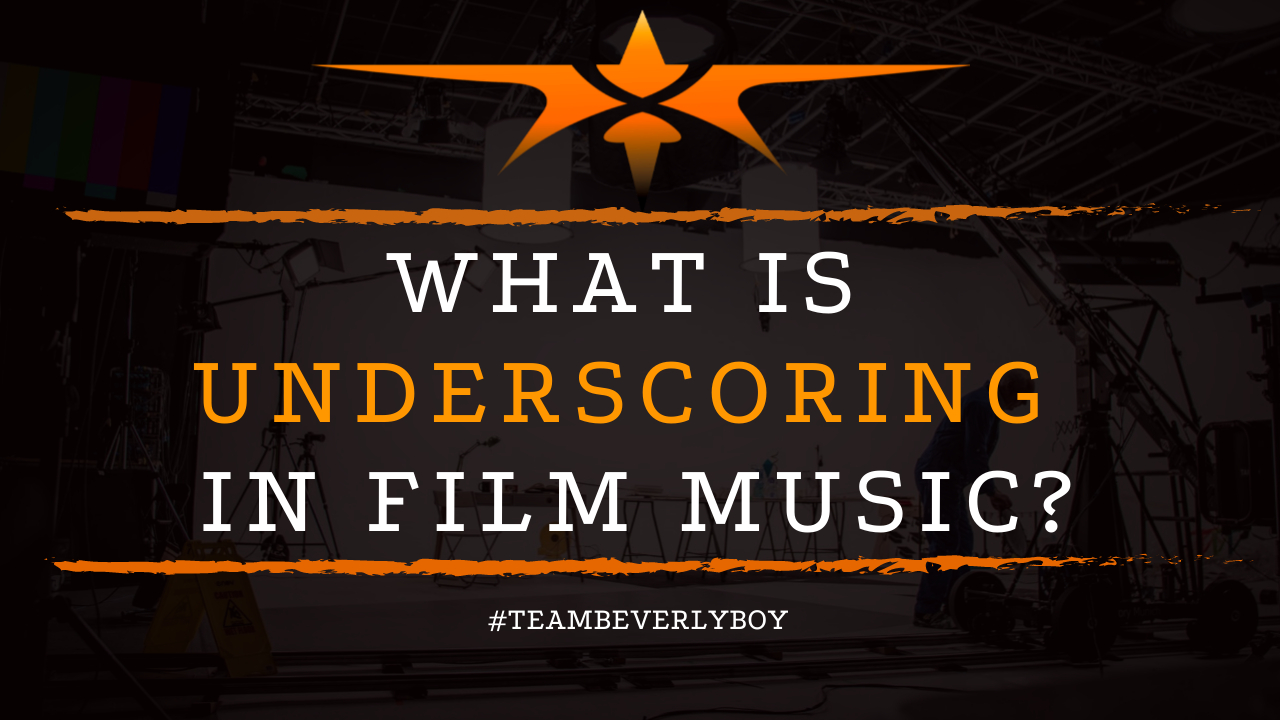
What is Underscoring in Film Music?
The various techniques and tricks that are incorporated into a film to help the audience feel connected to the story are incredibly important, especially as music is concerned. In film music, there are a number of different techniques, such as underscoring, that are used to create the desired tone and connections with the audience. Generally, these techniques for elevating or establishing the mood or underlying theme of the film. But techniques like underscoring can be used for several other purposes, too. But, what is underscoring in film music, exactly?

What is Underscoring in Film Music?
In film music, underscoring represents the technique in which soft music is played quietly in the background or “under” the spoken dialogue that is taking place within the scene.
If you were to think of how loud each element of sound within a particular scene is from a loudest on top and quietest on the bottom, underscoring would represent those quieter sounds that are played sort of beneath the more prominent sounds of dialogue.
Underscoring in film music can also refer to the quietly playing music for use within a scene to establish the mood or underlying theme.
Background Music
Essentially, underscore is the background music that the audience will hear during the scene. The underscore music specifically aligns with the dialogue and functions as a means of emphasizing the dialogue itself.
So that the audience can feel more connected to the mood or theme of the scene.
How is Underscoring in Film Music Achieved?
In answering the very common question, “what is underscoring in film music?” It’s equally important to address the question, “how is underscoring in film music achieved?”
In fact, there are several ways that a filmmaker will set the underscore of the film and establish the mood or the tone of the scene. For movies, the underscore is generally written specific for each scene following a spotting session.
In which the composer and the Director of the film work together to establish sound goals and individual sound needs for the film.
Before you apply underscoring, the filmmaker will carefully examine the scene and consider the essential questions:
- Is underscoring really necessary to create the mood for the scene?
- Is there any way that the actors could establish the mood more prominently with their dialogue before adding underscore?
- What exactly does one need for the underscore to finish off the scene? If it’s a particular mood, you’re going to have to figure out how to create that mood through music.
- How can you subtly incorporate underscore without drawing away from the dialogue or any other elements of the scene?
Other Considerations
Of course there are many other considerations that a composer is going to make as they produce the underscore. And there are equally as many considerations that the film Director will make prior to establishing the underscore.
The goal being that underscore never over-scores the dialogue or any other elements of the scene. The underscore should come in, and move out, without any real audience recognition that it was ever there.
However, it must also accentuate the desired mood or underlying theme of the scene. It’s a balance of sorts just like many other elements of filmmaking.
The Takeaway
So what is underscoring in film music? Underscoring represents the background music which plays under the film dialogue to create the mood or underlying theme of the scene.
It should neither be highly recognized or prevalent, and yet it is incredibly powerful and important, too. It’s a balance that draws audience connection to the emotions, mood, and theme of the current scene that is playing out.


